Öhlins RXF38 m.2
Travel Options: 160, 170 (tested), and 180 mm
Wheel Sizes: 29’’
Available Offset Options: 44 mm & 51 mm
Stanchions: 38 mm
Test Duration: 2 months
Test Location: Washington
Reviewer: 6’, 170 lb / 183 cm, 77.1 kg
Blister’s Measured Weight (29’’, 170 mm, uncut steerer tube): 2317 g
MSRP: $1350
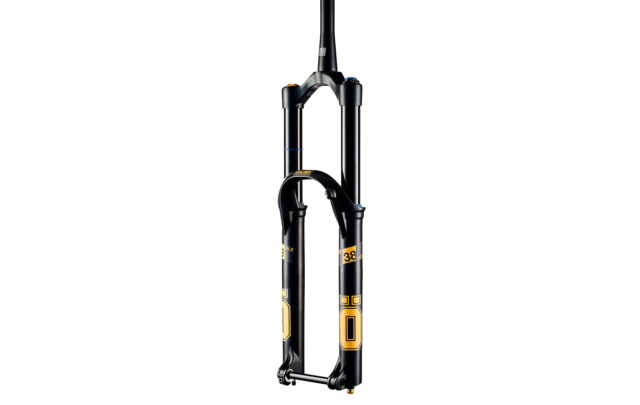
Intro
I was a big fan of Öhlins’ RXF36 fork when I reviewed it last year because of its combination of outstanding midstroke support, paired with fairly good small-bump sensitivity — traits that are often somewhat in conflict with each other. But particularly compared to the big single-crown forks on the market — chiefly the Fox 38 and RockShox ZEB — its chassis stiffness and precision felt a bit lacking. That’s where the new RXF38 comes in, as Öhlins’ competitor to those extra-stout options.
The Design
The RXF38 looks a whole lot like a beefed-up RXF36 (and yep, the stanchions are 2 mm bigger, at 38 mm diameter). As with its smaller sibling, the RXF38 features a bolt-on floating axle (essentially the same design used on the current Fox 36 and 38, when spec’d with the bolt-on option) which is intended to compensate for variations in hub width without pulling the lower legs together, which could potentially result in them binding. And as you’d expect for a modern single crown, that axle is a 110×15 mm Boost affair.
Öhlins says that the chassis of the RXF38 is a blend of a bulked-up RXF36 and a slimmed-down DH38 (their dual-crown DH fork), and that extra stiffness comes at about a 200 g weight penalty (and an extra $100 in cost) compared to the RXF36. And in keeping with the RXF38’s intended use on longer-travel bikes, it’s only available with 160, 170, and 180 mm of travel.
At least so far, the RXF38 is available for 29’’ wheels only, with the familiar 44 and 51 mm offset options for that wheel size. The steerer tube is tapered 1.125 to 1.5’’, and both standard and “e-bike” crowns are available, with the latter being beefed up to match the aesthetics of the new 1.8’’ headset standard (though that version of the RXF38 still uses a 1.5’’ tapered steerer tube). Tire clearance up to 2.6’’ is stated, and the RXF38 comes with post mount brake tabs for a 200 mm rotor.
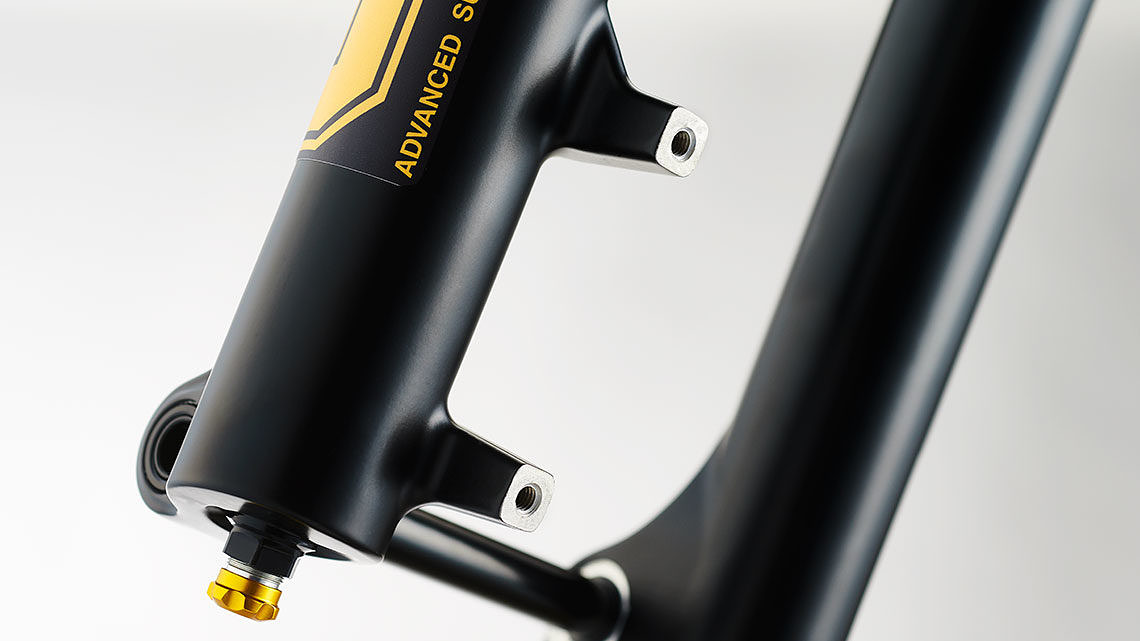
While the RXF36 is available in both air- and coil-sprung versions, the RXF38 is air-only, at least for now. Coil-sprung forks are a bit of a rarity these days, especially at the higher end of things, so it’s not particularly surprising to see Öhlins focus their efforts on the air version, particularly in light of current pandemic-induced supply chain headaches. Whether or not a coil version will show up down the line remains to be seen.
As with the RXF36, there’s no less expensive, stripped-down version of the RXF38. Fox and Rockshox offer a number of versions of the 38 and ZEB aimed at a range of price points, but the RXF38 is high-end only. At an MSRP of $1,350, it’s just a touch more expensive than the top-end Fox 38 Factory ($1,250) and a bit more than the RockShox ZEB Ultimate ($1,020) — it’s clear that Öhlins intends the RXF38 to be a high-end product.
Air Spring
The air spring design of the RXF38 carries over from the RXF36. It’s a three-chamber air spring, similar to those found in the Manitou Mezzer Pro and EXT Era. Like most contemporary air forks, the RXF38 features automatically equalizing positive and negative chambers. What sets the RXF38 apart from more typical two-chamber designs, as used by Fox and RockShox, is the addition of a third, independently adjustable air chamber, which essentially functions as a second positive chamber, which Öhlins calls the “ramp up chamber”.
The way the ramp-up chamber works is simple: It runs roughly double the air pressure of the main positive chamber, which is stacked on top of the ramp-up one. As the fork starts to compress, the pressure in the main chamber increases, until it reaches that of the ramp-up chamber.
At this point, the piston separating the ramp-up chamber from the main chamber begins to move, and both chambers compress in unison. At this inflection point, the ramp-up chamber effectively becomes part of the main positive chamber, increasing its volume, and making the fork ramp up less quickly from that point forward. The idea is to make the fork ramp up more aggressively through the midstroke, for improved support, but mitigate the ramp up deep in the stroke, to make it easier to use full travel and avoid harshness deep in the stroke.
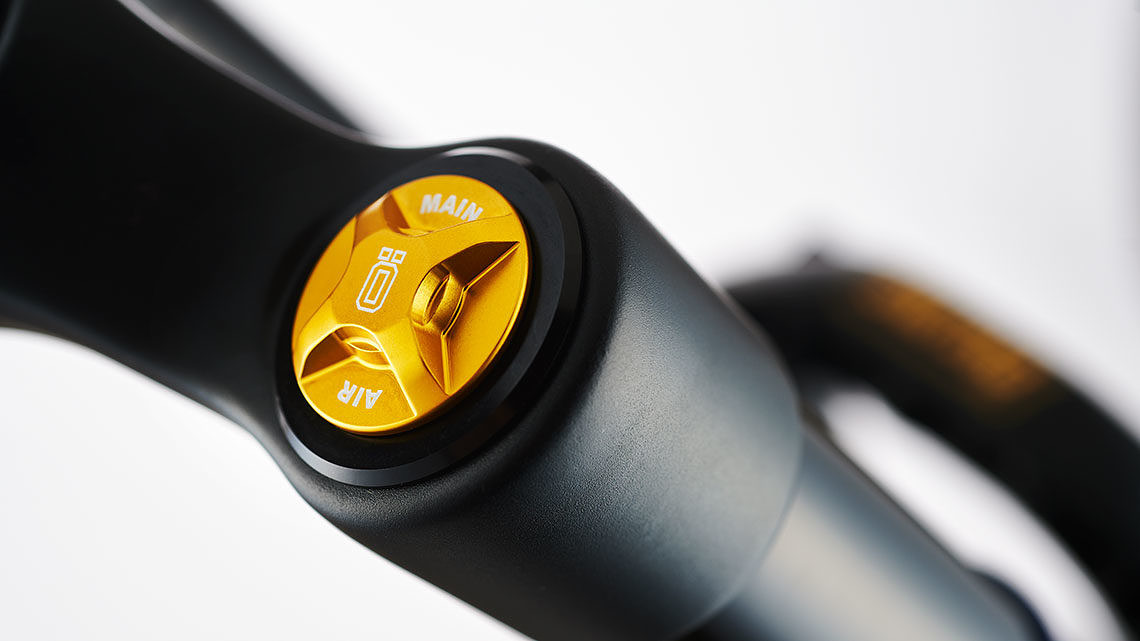
As with the RXF36, the RXF38 forgoes the air volume reducing spacers that Fox and RockShox use to adjust the amount of progression in the spring and instead relies on the ramp-up chamber for that duty. The results are a bit different — as mentioned above, the primary effect of the ramp-up chamber occurs in the midstroke, rather than near bottom out — but I didn’t find the RXF36 to be lacking in bottom-out control and would expect the same for the RXF38.
Like other forks that use this sort of layout, it’s important to pressurize the higher-pressure ramp-up chamber first and the main one second, to keep the piston separating them in the right place. In the case of the RXF38, that means starting with the valve on the bottom of the lower leg and then moving to the one in the “normal” place at the crown. The second air chamber does make tuning a touch more complicated — the relative pressure of the two chambers has a substantial impact on how the fork performs — but we found the RXF36 to be a bit more forgiving of minor changes in setup than either the Manitou Mezzer Pro or EXT Era, and would expect that to carry over to the RXF38 as well.
Öhlins do say that they’ve increased the negative spring volume a touch in the RXF38, in the name of improving small-bump sensitivity. The sensitivity of the RXF36 was already quite respectable, particularly for a fork that’s also got as much midstroke support as it has, so we’re curious to see how that plays out in the RXF38.
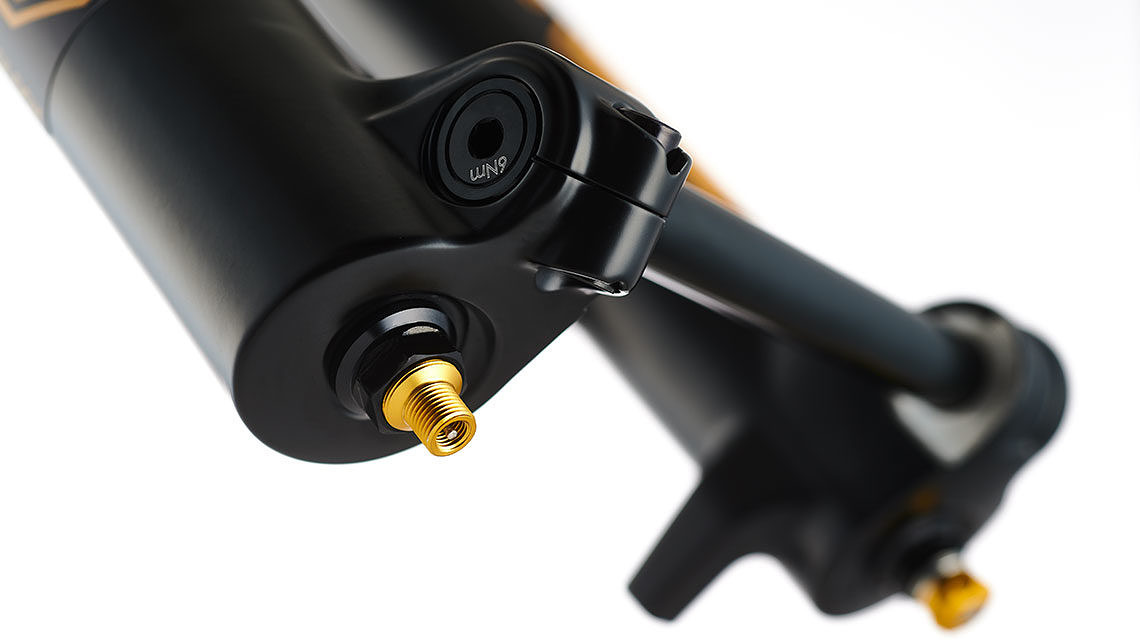
Damper
Öhlins has been a pioneer in developing twin-tube dampers for mountain bike applications (including working with Cane Creek on the original Double Barrel) and it’s no surprise that the RXF38 also carries over the same twin-tube design from the RXF36. In short, a mono-tube damper essentially moves oil back and forth along the same pathway (albeit through different valving) on compression and rebound; a twin-tube design has, well, a second “tube” that allows at least some oil to recirculate around a second pathway on the rebound stroke. If a more in-depth description would help, Vorsprung Suspension has an excellent video that goes through the differences.

In theory, the main advantages of a twin-tube design (for a mountain bike application) are the potential for reducing the amount of required IFP pressure and movement, thereby reducing friction, and the potential for a wider range of external adjustment, without the need for internal re-valving. The TTX18 damper in the RXF38 (and the RXF36) features adjustable high- and low-speed compression, plus a single rebound adjuster — nothing out of the ordinary here. The low-speed compression adjuster has 15 positions, and the high-speed one three. A fourth position on the HSC knob is used to activate a climb mode, which is something of an unusual feature on a long-travel fork. I didn’t find it to be terribly useful on the RXF36 — rear suspension bob simply takes up far more energy than any fork movement does, so the gains to be found were pretty minimal — but it’s there if you want it.
We found the TTX18 damper to perform extremely well in the RXF36, though it’s worth noting that its stock tune is somewhat on the firmer side of average, particularly in terms of high-speed compression. That’s undoubtedly good news for plenty of larger and/or more aggressive riders, though certain smaller folks may find themselves looking to get a lighter tune installed. We’ll be curious to see if the same is true for the RXF38, and will weigh in in our full review.
FULL REVIEW
As I noted above, I was a big fan of Öhlins’ RXF36 m.2 Air fork when I tested it last year for its excellent damper and unusual combination of great midstroke support and pretty good small-bump sensitivity. But as someone with an affinity for long, slack bikes and steep terrain, I did find myself wanting a burlier, stiffer version at times.
Enter the RXF38, the RXF36’s big brother — and having now spent a few months on it, the RXF38 is exactly what I hoped it would be.
On the Trail
In short, the RXF38 feels a whole lot like an RXF36 with a bigger, stiffer chassis — and that’s because it basically is. The two share the same damper design, and a nearly identical air spring — though Öhlins has increased the negative spring volume in the RXF38 slightly, in the name of improving small-bump sensitivity. I can’t say that’s made a huge difference, but having A-B tested the two back to back, the RXF38 does have a slight edge in terms of sensitivity off the top.
Where the RXF38 really has an advantage over the RXF36 is in terms of chassis stiffness. It’s substantially more precise in off-camber terrain and (more importantly, for my preferences) feels a lot stiffer fore-aft. The RXF38 feels more composed under really hard braking, and significantly less prone to flexing rearward. In turn, that also makes it feel like the suspension movement isn’t as hindered by binding in the chassis, again especially when braking or otherwise loading the front end very hard. The RXF36 is reasonably stiff for what it is and does a totally reasonable job of avoiding binding and the ensuing harshness, but the RXF38 is significantly better on that front.
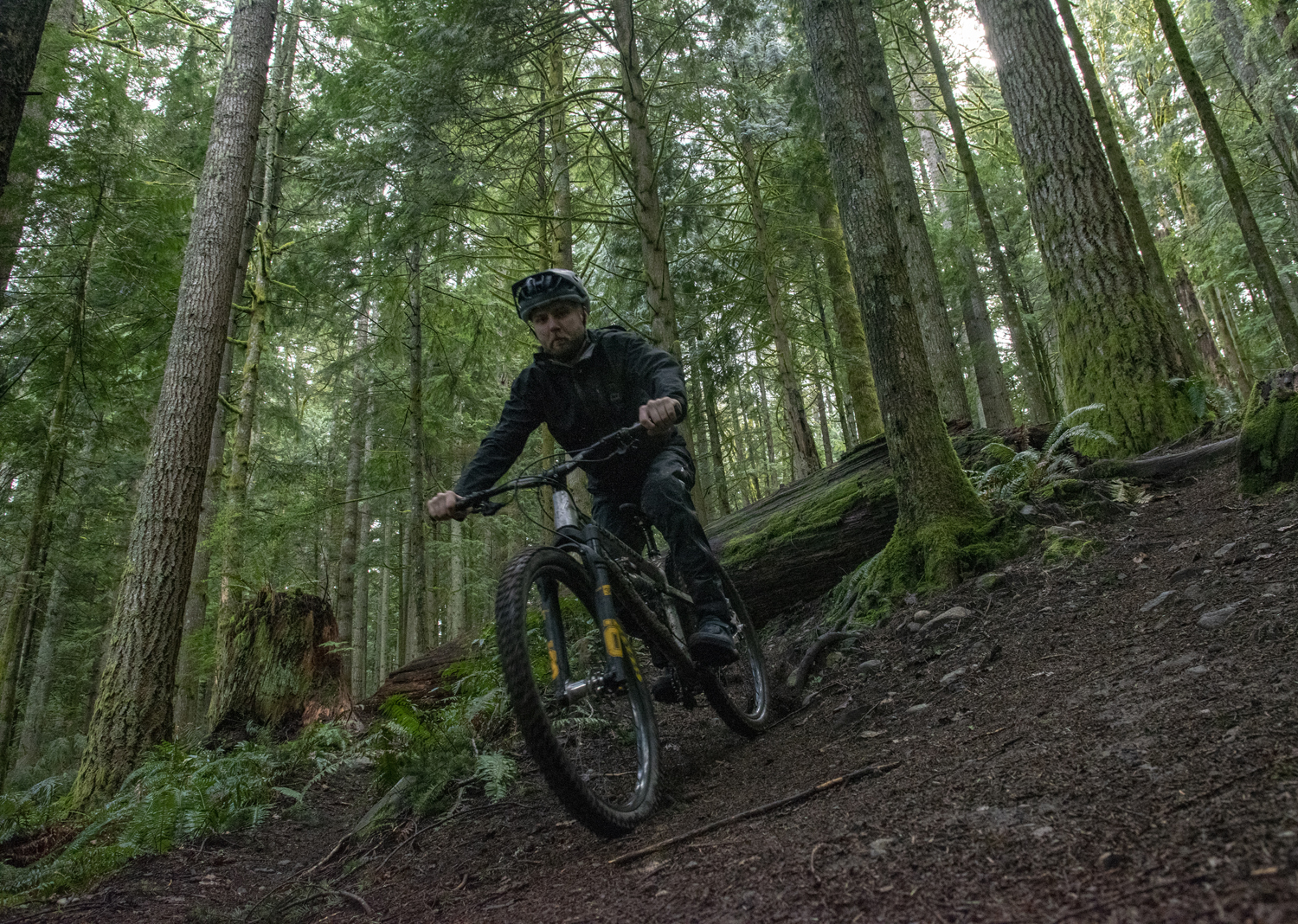
All that said, the RXF38 doesn’t feel quite as stiff as the current single-crown belt holder, the RockShox ZEB. I’d put it a touch stiffer than the Fox 38, but really only by a hair — those two are very, very close. And of course, the bigger, burlier chassis comes with a bit of a weight penalty — right around 200 g, over the RXF36. That puts it very slightly heavier than the RockShox ZEB, and a little lighter than the Fox 38 — on the heavier side for an air-spring single crown, but by no means an outlier.
I also noted that the stock damper tune on the RXF36 felt quite notably firm in compression, and while that’s still true of the RXF38 to some extent, I did wind up running a bit more high-speed compression damping on that fork (in terms of the adjuster range) to produce similar results. It’s a bit tricky to tell if the damper tunes really are substantially different, or (as I suspect) the reduced flex and therefore reduced binding is actually letting me run more compression damping since the fork chassis isn’t introducing its own, of a sort.
Whatever the case, the RXF38 feels a bit more consistent than the RXF36, especially when it’s being pushed hard. And while the damper tune is still relatively firm (particularly compared to the notably lightly damped Fox 38), I think it’ll work for a whole lot of people. If you know you like very light compression damping, or are just a very light person, I might be a little warier, but for most people, the stock tune should be good.
As with the RXF36, the damper is excellent. It’s consistent, supportive, and very well controlled, and does an especially good job of allowing fairly firm compression settings without getting harsh or spiky. And while the stock compression tune is on the firm-ish side, especially in terms of high-speed damping, the adjustment range is broad, and the adjusters make nice, consistent changes from one click to the next.
As we’ve consistently found with forks that use a dual-positive air spring design (the Manitou Mezzer Pro and EXT Era, in addition to the Öhlins twins), midstroke support from the RXF38 is outstanding. In particular, it’s possible to dial in a very, very supportive setup without wildly compromising small-bump sensitivity or the ability to use close to full travel. The second air chamber does make setup slightly more complicated since there’s an extra air pressure setting to dial in, but Öhlins’ recommended pressures proved to be a decent baseline to start from.
The added complexity might be a turn off to certain riders who aren’t inclined to really take the time to dial in their suspension setup, or are averse to needing to keep track of two air pressure settings, but it absolutely makes a difference compared to more conventional spring designs when it comes to midstroke support, in particular. You can, of course, make any fork as supportive as you want by increasing the spring rate, but I’m really talking about what kind of midstroke support you can get without wildly compromising performance elsewhere, and the RXF38 is really excellent on that front.
The RXF38 is also easier to set up and somewhat less sensitive to small changes in air pressure than either the EXT Era or (especially) the Manitou Mezzer Pro. Both are excellent forks that can perform extremely well when dialed in, but do take a somewhat careful setup to maximize their potential. The RXF38 has a fairly broad tuning range from the air spring, but it takes more dramatic swings in pressure, especially in the ramp-up chamber, to make a massive change in its performance, which does help simplify setup and maintenance of correct air pressure to some extent.
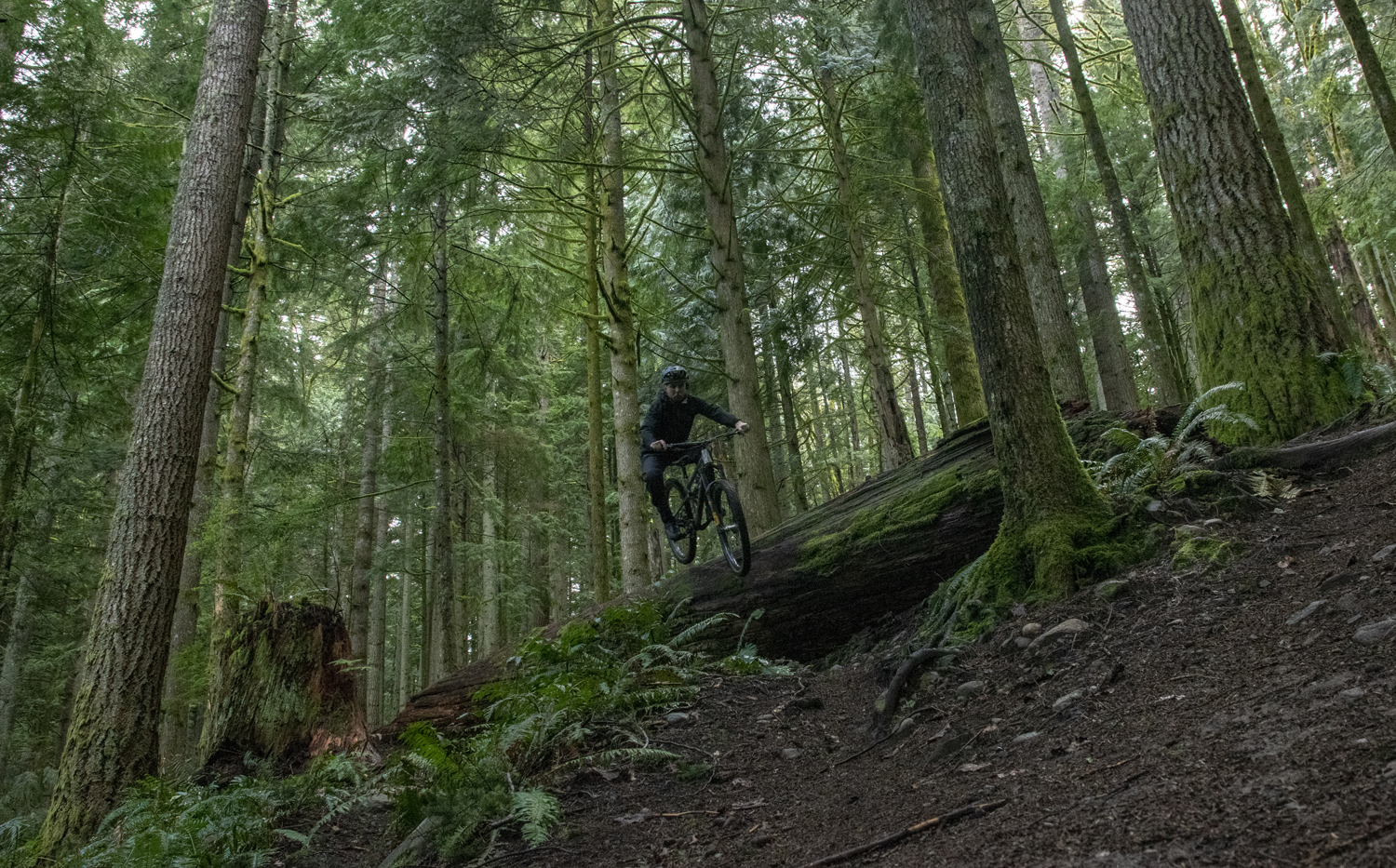
I did find myself needing to run a good bit more pressure than Öhlins recommends in the ramp-up chamber, both to improve midstroke support and to avoid the occasional harsh bottom out on some bigger landings. The RXF38 doesn’t use volume spacers to tune progressivity and instead uses the secondary air chamber — which also affects midstroke support significantly, so the overall tuning envelope is a bit different than forks that use a more conventional spring design. I didn’t have any issues nailing down a setup that I was happy with, but folks who want a very progressive fork without it also feeling quite firm and supportive through the midstroke might struggle a little. I don’t think that many people will fall into that camp, but it does feel like the most obvious theoretical limitation to the arrangement to me.
Two months isn’t much to go on as far as durability is concerned, but I’ve had no issues with the RXF38 so far — it’s been trouble- and creak-free so far. I’ll update the review if anything crops up in the future, but so far, so good.
Comparisons
Our long-travel single crown fork roundup goes a lot deeper on the comparisons between the RXF38 and a bunch of its competition, but I’ll do a quick rundown here. In short, the RXF38 has much better midstroke support than either the Fox 38 or (especially) the RockShox ZEB, and does so while having very good small-bump sensitivity as well. Exactly how they stack up on that front is probably largely down to setup — I still think the ZEB has a narrow edge over the 38 in terms of sensitivity, and the RXF38 is in a similar ballpark to the 38. But you can definitely shift that order around a bit depending on how you set up all three. What’s not up for debate is that the RXF38 is much, much more supportive than the other two, especially for setups that preserve pretty good small-bump sensitivity. And in terms of stiffness, the RXF38 once again feels very similar to the 38, and just a touch behind the ZEB.
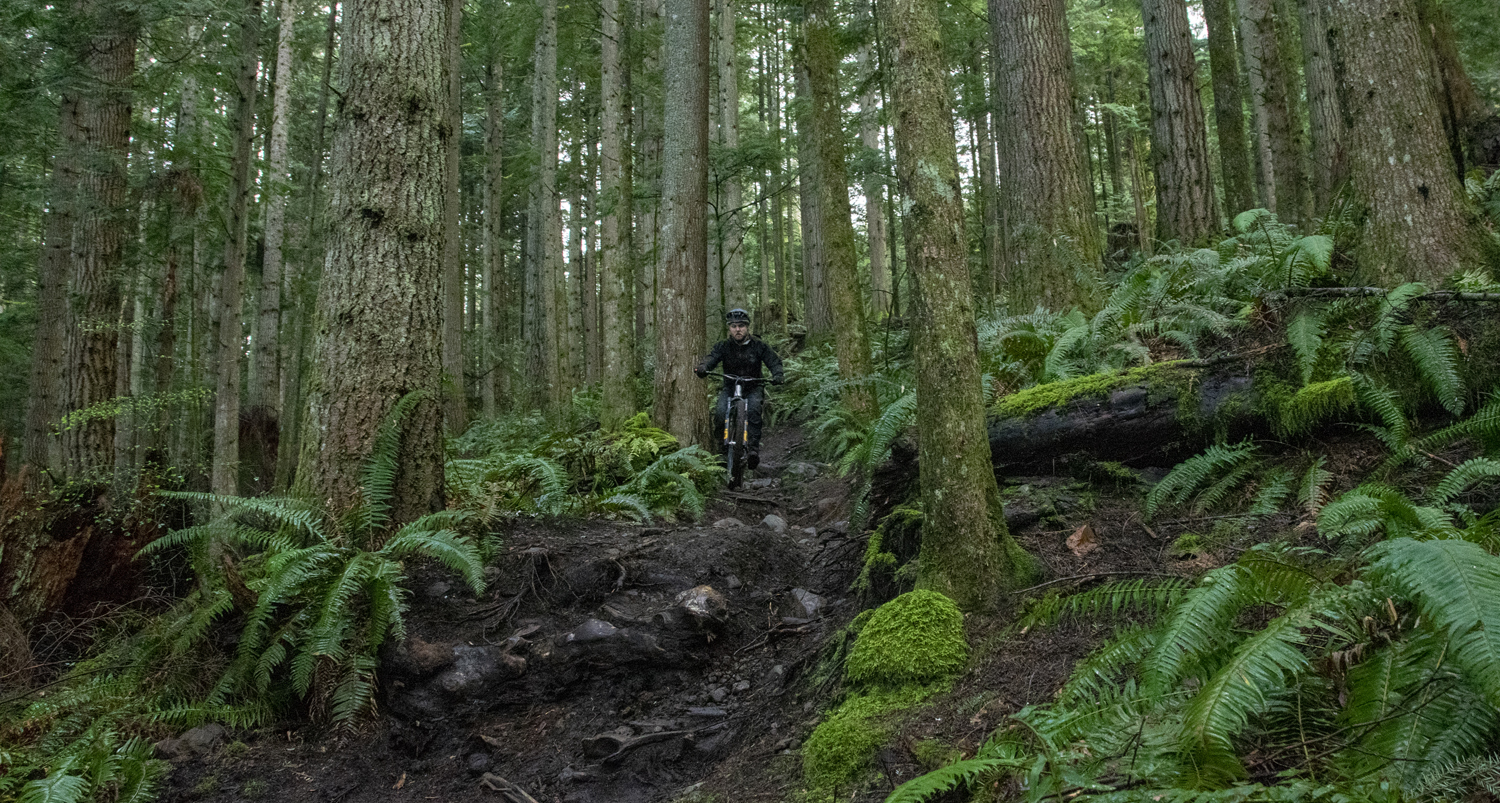
Compared to the Manitou Mezzer Pro, the RXF38 is notably stiffer and features significantly better small-bump sensitivity, but is quite a bit heavier, and, frankly, the stiffness gap is surprisingly narrow given the weight difference — the Mezzer is extremely impressive in terms of stiffness-to-weight ratio. And the hydraulic bottom-out circuit in the Mezzer does make a very real difference in terms of control deeper in the travel — it’s a notable improvement over the RXF38 on that front.
Bottom Line
When Öhlins announced the RXF38 a while back, I was hoping that it would perform like a stiffer, burlier RXF36 — and I’m pleased to say that it does. The combination of very good midstroke support plus pretty good small-bump sensitivity, paired with a very good damper and stout chassis, works really well for me. And especially in the longer travel configurations where chassis flex is more pronounced due to the extra leverage on the fork, the added stiffness over the RXF36 is very welcome in my book — certainly worth the 200-gram weight penalty. Öhlins took a little longer to get their 38mm-stanchion behemoth out into the world, but it was worth the wait — it’s definitely my personal favorite of the three.

Forget the fork, that log drop into loam looks tasty.
Great review. I currently have the Fox 38 Factory and am 150lb rider. It’s pretty dialed – but I do run my HSR completely open and only few clicks of LSR. Compression have few clicks each. I totally have FOMO for 3-chamber air forks. I spent a test ride on EXT ERA and noticed the increased mid-stroke support and general felt more active.
Not sure which 3-chamber air fork would be my best bet. Most Mezzer Pro owners also mention its overdamped, but it is the best value. The EXT is coming into visibility now as the EURO continues to drop against the dollar – but it’s still a lot pricier than the Mezzer. What do you think for lighter rider like me? I ride in Santa Cruz.
It has heavier Damping than a grip 2 but Not more or Close to an Era. It has the strongest Damping For Many it was too much until recently they Made the era V2.1.
The mezzer is easiest to Service and to travel at Home, only News a cassette Tool Wirth a hole in the middle Form the airspring service.
Traveling can be done 140-180mm and theoretically even Further without Any additional Costs.
I would Go mezzer/rxf 38 or used cheap mezzer expert and throw an Avalanche Cartridge in there.
Most potent,lightest,stiff and reliable Chassis you could Ride.
What settings did you end up with. I feel like their recommended settings were still too soft for me.